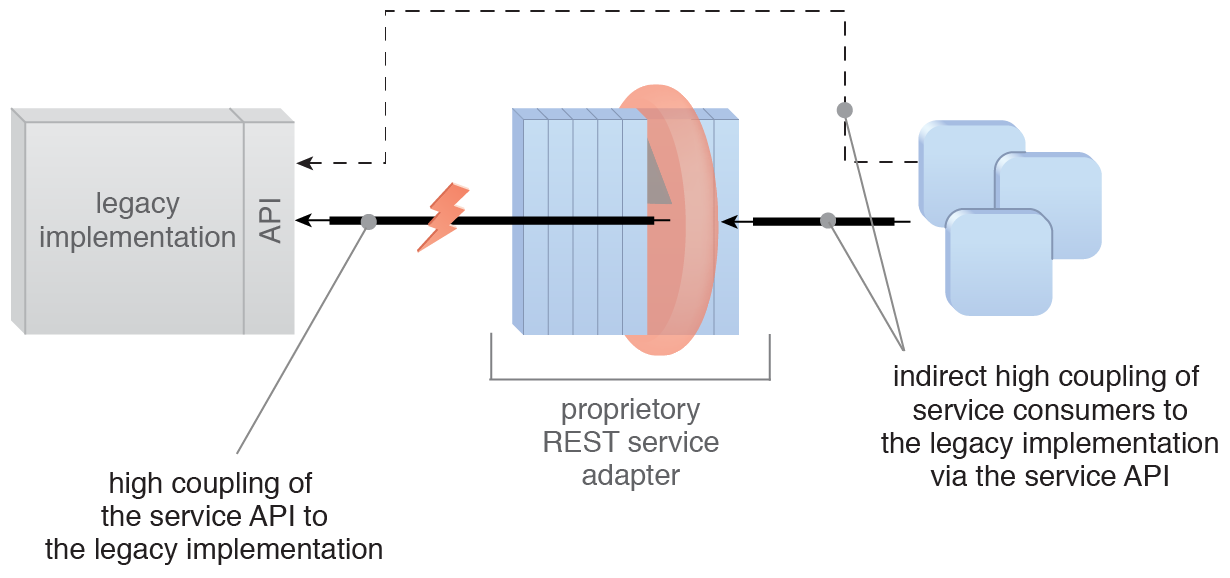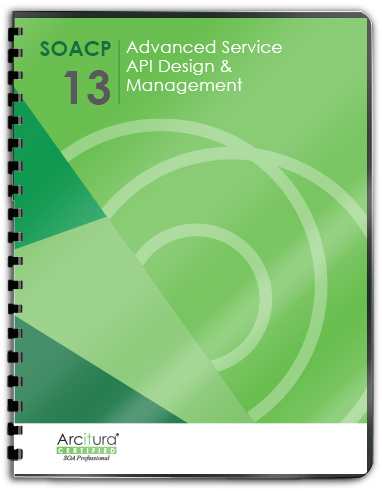Service API Patterns, Protocols, Coupling Types, Metrics > Service API Design Patterns > Legacy Wrapper
Legacy Wrapper
How can adapters and non-standard wrapper APIs be prevented from spreading indirect consumer-to-implementation coupling?
Different vendors of legacy products provide adapters and wrapper APIs to allow programs to access their products using contemporary protocols. This can force service consumers to couple to APIs with high technology coupling requirements, potentially resulting in a proliferation of implementation coupling throughout a solution or domain.
With the application of the Legacy Wrapper pattern, a standardized legacy wrapper service API is created, which encapsulates available legacy interfaces and exposes them via an API that is compliant with functional and schema-related design standards and conventions.

The use of a proprietary REST-based service adapter (provided by the legacy application vendor) imposes high API-to-logic coupling, resulting in high implementation coupling on service consumers.
This pattern is covered in Module 13: Advanced Service API Design & Management.
For more information regarding service API design & management courses and accreditation, visit the Service API Specialist program page.
